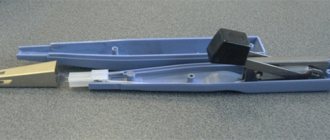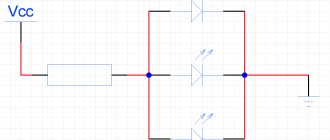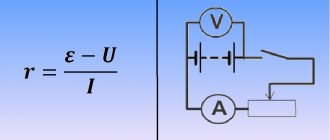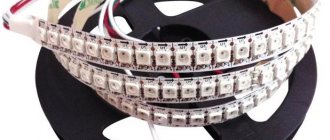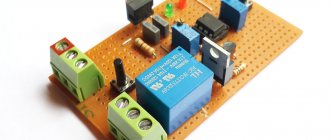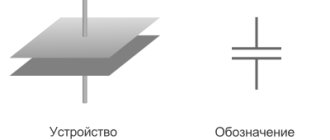Dmitry Levkin
- Piezoelectric effect
- Piezoelectric matter equations
- Properties of piezoceramics
- Production of piezoelements
- Application of piezoceramics
Piezo element
- an electromechanical transducer made of piezoelectric materials of a certain shape and orientation relative to the crystallographic axes, with the help of which mechanical energy is converted into electrical energy (direct piezoelectric effect), and electrical energy into mechanical energy (inverse piezoelectric effect).
Structurally, the piezoelectric element is a piezoceramic with applied electrodes. Piezoelements can be of various shapes: in the form of disks, rings, tubes, plates, spheres, etc. For vibrators and generators, piezoelements are combined into a piezoelectric stack to achieve better characteristics.
Change color
Vibrations of the piezoelectric element
Diameter: 10 mm Thickness: 1 mm Material: TsTS-26 Voltage: 5V Excitation frequency: 1 MHz Oscillation scale: 30000:1
View fluctuations
Stop the vibrations
Figure - Vibration of a free piezoelectric element under the influence of voltage (inverse piezoelectric effect)
Piezoelectric effect
Piezoelectric substances ( piezoelectrics
), in particular piezoceramics, have the property that when deformed under the influence of external mechanical pressure, electrical charges arise on their surface.
This effect is called the direct piezoelectric effect
and was discovered in 1880 by the Curie brothers.
Reference: The first article by Jacques and Pierre Curie on piezoelectricity was presented to the Mineralogical Society of France (Societe mineralogique de France) at a session on April 8, 1880 and later to the Academy of Sciences (Academie des Sciences) at a session on August 24, 1880. Pierre and Jacques Curie first discovered the direct piezoelectric effect in a tourmaline
. They noticed that if mechanical pressure is applied to a crystal in a certain direction, electrical charges appear on opposite sides of the crystal, proportional to the pressure and of opposite polarity. Later they discovered a similar effect in quartz and other crystals. In 1880, Pierre Curie was only 21 years old [9].
Soon after this (in 1881), the inverse piezoelectric effect
, namely, that a substance located between two electrodes reacts to an electrical voltage applied to it by changing its shape. The first effect is currently used for measurements, and the second is used to excite mechanical pressures, deformations and vibrations.
More detailed studies of the piezoelectric effect showed that it is explained by the property of the unit cell of the material structure. In this case, the unit cell is the smallest symmetrical unit of material, from which a microscopic crystal can be obtained by repeating it many times. It was shown that a necessary prerequisite for the appearance of the piezoelectric effect is the absence of a center of symmetry in the unit cell.
Figure 1 – Unit cell of lead titonate zirconate (PZT) at temperatures above the Curie point (left) and at temperatures below the Curie point (right)
The piezoelectric effect can be briefly explained here.
using the example of barium titanate, a commonly used piezoelectric ceramic with a relatively simple unit cell design. Barium titanate BaTiO3, like many other piezoceramic substances, is similar in structure to perovskite (CaTiO3), after which this class of materials is named. The unit cell at temperatures above the critical one, which is also called the Curie point, is cubic. If the temperature is below this critical temperature, then the unit cell is tetragonally distorted towards one of the edges. As a result, the distances between positively and negatively charged ions also change (Figure 1, for BaTiO3 instead of Pb - Ba). The displacement of ions from their original position is very small: it amounts to a few percent of the unit cell parameter. However, such a displacement leads to a separation of the centers of gravity of the charges inside the cell, so that an electric dipole moment is formed. According to the energy conditions, the dipoles of neighboring elementary cells of the crystal are ordered into regions in the same direction, forming so-called domains.
Figure 2 – Disordered polarization (left) and ordered polarization of domains when a strong electric field is applied (right)
The polarization directions of domains are distributed in a polycrystalline structure according to a static law. Thus, disordered accumulations of individual microcrystals in the structure of a substance, which are formed only in sintered ceramics, in a macroscopic sense cannot give any piezoelectric effect at all. Only after the so-called polarization process, in which the application of a strong electric field to the ceramic aligns as many domains as possible parallel to each other, is it possible to exploit the piezoelectric properties of unit cells. Polarization is usually carried out at a temperature slightly below the Curie temperature to facilitate domain orientation. After cooling, this ordered state remains stable.
Modern design tools allow you to calculate/simulate a separate piezoelectric element or an entire piezoelectric transducer. In agreement with Engineering Solutions, you can order a calculation of the parameters of the piezoelectric transducer
Mechanical compression or tension acting on the piezoelectric plate parallel to the direction of polarization leads to deformation of all unit cells. In this case, the centers of gravity of the charges mutually shift inside the elementary cells, which are now located predominantly in parallel, and the result is a charge on the surface [2].
Mechanism of action of the piezoelectric element
The basis
- this is a block of a piezoelectric element that sends a pressure force from the button to the piezoelectric element itself.
The main component of a piezoelectric element is a piezoelectric crystal
.
This is a plate cut from a quartz crystal. Its function is to convert mechanical deformation into electrical voltage
.
The plate is very hard, can withstand significant bending and compression and produce high voltage. When you gently press the crystal, the voltage produced will be small, but it will be long-lasting. When you press the crystal with the same force, but quickly and instantly, the output voltage is stronger, but it will be instantaneous. Therefore, this property of the crystal is used to create a spark in a piezo lighter
. To change the impact force from smooth to sharp, the lighter has a mechanism: an elastic spring, which is located under the piezo lighter button. By pressing the button, the spring is also compressed. After pressing the button all the way, the spring moves back the lever on which it rests. After this, the spring sharply straightens. At the other end of the spring there is a metal hammer, which, when the spring opens, strikes the crystal with great speed. On the back of the crystal there is a metal lining that prevents the crystal from moving due to the movement of the hammer. The result is an instant and strong blow to the crystal, which causes a spark.
- Human electrical potential
Piezoelectric matter equations
Polarized piezoelectric materials are characterized by several coefficients and relationships. Four possible forms for the piezoelectric matter equations are shown below [13]:
- Form of mechanical stress - charge
- Form mechanical stress - electrical stress
- Shape deformation - charge
- Shape deformation - electrical voltage
,
- where {T}
is 6×1 vector of mechanical stress, Pa, - {S}
– 6×1 vector of mechanical relative deformation (elastic deformation), m/m, - {D}
- 3×1 vector of electrical induction (electrical displacement), C/m2, - {E}
– 3×1 electric field strength vector, V/m, - [cE/D]
– 6×6 matrix of elastic stiffness coefficients (at constant E/D), N/m2 - [sE/D]
– 6×6 matrix of elastic compliance coefficients (at constant E/D), m2/N, - [εS/T]
– 3×3 matrix of dielectric constant (for S = constant/T = 0), f/m, - [e]
- 3×6 matrix of piezoelectric coefficients of mechanical stress, C/m2 or N/Vm, - [h]
- 3×6 matrix of piezoelectric strain coefficients, N/C or V/m, - [d]
- 3×6 matrix of piezoelectric charge coefficients (relative strain), C/N or m/V, - [g]
- 3×6 matrix of piezoelectric constants of electrical voltage (pressure), m2/C or Vm/N, - t
(superscript) - transposed matrix
Production of piezoelements
Most compositions of piezoceramics are based on chemical compounds with the formula ABO3 (for example, BaTiO3, PbTiO3) with a perovskite-type crystal structure and various solid solutions based on them (for example, the systems BaTiO3 - CaTiO3, BaTiO3 - CaTiO3 - CoCO3, NaNbO3 - KNbO3). Particularly widely used as piezoelectric materials are compositions of the PbTiO3 - PbZrO3 system (the so-called PZT system, or PZT). A number of compounds with the formula AB2O6 are also of practical interest, for example. PbNb2O6, which have a very high Curie point (~570 °C), which makes it possible to create piezoelements for operation at high temperatures.
Figure 7 – Powder for making a piezoelectric element
Manufacturing process of piezoceramics
is divided into several stages. When carrying out the synthesis of a given ferroelectric compound, the starting raw materials (oxides or salts, for example, titanium dioxide and barium oxide) are crushed and mixed in quantities corresponding to the stoichiometric composition of the compound, and then subjected to heat treatment at temperatures of 900 - 1300 ° C, during which chemical synthesis. The so-called method of precipitation from aqueous solutions is also used, in which the synthesis temperature, due to ideal mixing of the components, is reduced to 750 - 1000 ° C. From the powdered synthesized material, pressing (as well as injection molding) produces blanks of the required configuration and size for future piezoelectric elements, which are then fired according to a strictly defined temperature regime, which largely determines the properties of piezoceramics. Mechanical processing of the part after firing provides it with a precisely specified shape and size. Electrodes made of silver, nickel, platinum, etc. are applied to the part, and the most widely used method is burning in silver. To polarize the ceramics, electric voltage is applied to the electrodes (field strength E ranges from 0.5 to 3 kV/mm depending on the chemical composition and polarization method). In order to reduce the field strength E during polarization, the sample is heated to temperatures close to the Curie point (since the domains have greater mobility) and then slowly cooled in the presence of a field. Piezoceramics is characterized by the so-called. aging, i.e., a change in its parameters (dielectric constant, piezoelectric moduli) over time, especially noticeable in the first few days after production and polarization of the samples, which is caused by changes in both mechanical stresses at the boundaries between grains and the magnitude of residual polarization [8].
Physical properties of the piezoelectric element
Piezoelectric materials are inherently quite simple and are characterized by only two physical quantities - dielectric constant and piezoelectric modulus. The capacitance of the piezoelectric element depends on the first value, and the electric charge formed on the electrodes after some force has been applied to them depends on the piezoelectric module.
In piezoceramics, three modules are used to describe the process, depending on the location of the force acting relative to the polarity of the piezoelectric element axis.
The most pronounced effect is manifested in the d33 module, in which the first digit of the index indicates the direction of the polar axis along the Z axis of the traditional coordinate system, and the second indicates the direction of the acting force along the same axis. Due to this, a piezoelectric element with a modulus value of d33 significantly exceeds the value of combinations with other directions.
The direct piezoelectric effect of the module is measured in units of coulomb/newton (K/N). It is this value that characterizes the material from which it is made. Regardless of the applied force and the size of the element itself, when a force of 1 Newton is applied, the same charge will form on the electrodes.
To determine the voltage on the electrodes there is a formula: U = q/C, in which in turn q = F d33. From this formula it is clear that, unlike the charge, the voltage will depend on the size of the piezoelectric element, since the capacitance C is related to the area of the electrodes and the distance between them. If we take as an example the capacity of a conventional lighter, equal to 40 picofarads (pF), then an applied force of 1 N will produce a voltage of 6 V. Accordingly, if the force increases to 1000 N (100 kg), then the resulting voltage will be 6 kV.
Application of piezoceramics
Piezoelectric materials have found application in a wide range of applications, such as medical instruments, industrial process control, semiconductor manufacturing systems, household electrical appliances, communication control systems, various instrumentation and other areas. Commercial systems that use piezoelectric materials are pumps, sewing machines, sensors (pressure, icing, angular velocities, etc.), optical instruments, laser printers, camera autofocus motors and many others. At the same time, the scope of application of these materials is constantly growing. Application of a piezo element
usually boils down to four categories: sensors, generators, actuators, and converters.
In generators
Piezoelectric materials can generate a voltage that is sufficient to create a spark between electrodes, and thus can be used as electrodes for igniting fuels, for gas stoves and for welding equipment. Alternatively, the electrical energy generated by the piezoelectric elements can be stored. Such generators make excellent solid-state batteries for electronic circuits.
In sensors
, Piezoelectric materials convert physical parameters such as acceleration, pressure and vibration into an electrical signal.
In power drives
, Piezoelectric materials convert an electrical signal into a precisely controlled physical displacement, precisely establishing the precision of mechanical instruments, lenses and mirrors.
In converters
, piezoelectric transducers can both generate an ultrasonic signal from electrical energy and convert incoming mechanical vibrations into electrical ones. Piezoelectric instruments are designed to measure distances, flow rates, and liquid levels. Transducers are also used to generate ultrasonic vibrations for cleaning, drilling, welding, grinding ceramics and for medical diagnostics [1].
Ultrasound Transducers Design
- Ranier Clement Tjiptoprodjo. On a Finite Element Approach to Modeling of Piezoelectric Element Driven Compliant Mechanisms.- Saskatchewan, Canada.: University of Saskatchewan Saskatoon, April 2005
- J. Krautkremer, G. Krautkremer. Directory. Ultrasonic testing of materials.-Moscow: Metallurgy, 1991.
- David H. Johnson. Simulation of an ultrasonic piezoelectric transducer for NASA/JPL Mars rover.- PA, USA.: Cybersonic, Inc. of Erie, 2003.
- www.piezo.com
- OST 11 0444-87 “Piezoceramic materials”
- Tokin. Multilayer Piezoelectic Actuators. User's Manual, Tokin Corporate Publisher.: 1996.
- D.V. Sivukhin. General physics course. T.I. Mechanics. - Moscow.: 1979.
- Golyamina I.P. Ultrasound.-Moscow: from “Soviet Encyclopedia”, 1979
- Jan Tichy, Jiry Erhart, Erwin Kittinger, Jana Privratska. Fundamentals of Piezoelectric Sensorics.- Heidelberg, Dordrecht, London, New York.: Springer, 2010
Bibliography
3D models Frequency response meter
